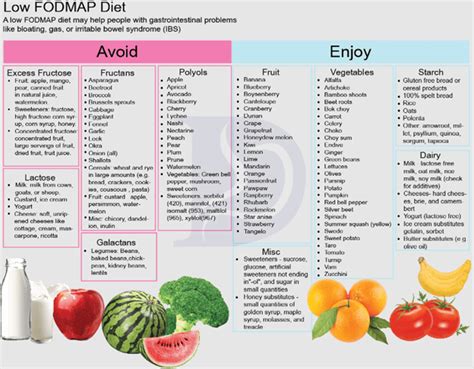Intro
Low-fiber vegetables are often overlooked in favor of their high-fiber counterparts, but they play a crucial role in a balanced diet, especially for individuals with digestive issues or those who are trying to manage their fiber intake. While it's essential to consume a variety of vegetables to reap their nutritional benefits, some individuals may need to limit their fiber consumption due to certain health conditions or dietary restrictions. In this article, we'll delve into the world of low-fiber vegetables, exploring their benefits, nutritional profiles, and practical uses in cooking.

What are Low-Fiber Vegetables?
Low-fiber vegetables are those that contain less than 2 grams of dietary fiber per serving. While fiber is an essential nutrient that provides numerous health benefits, some individuals may need to limit their intake due to digestive issues, such as irritable bowel syndrome (IBS), or other health conditions. Low-fiber vegetables can help individuals meet their daily vegetable needs while managing their fiber intake.
Benefits of Low-Fiber Vegetables
Low-fiber vegetables offer several benefits, including:
- Lower risk of digestive discomfort: For individuals with digestive issues, low-fiber vegetables can be easier to digest, reducing the risk of discomfort, bloating, and gas.
- Nutrient-dense: Low-fiber vegetables are rich in essential vitamins, minerals, and antioxidants, making them a nutritious addition to a balanced diet.
- Versatile: Low-fiber vegetables can be prepared in a variety of ways, making them a versatile ingredient in many recipes.
10 Low-Fiber Vegetables You Can Safely Eat
Here are 10 low-fiber vegetables that you can safely eat, along with their nutritional profiles and practical uses in cooking:
- Cucumber
- Fiber content: 0.5 grams per 100 grams
- Nutritional benefits: Low in calories, rich in vitamin K, and a good source of potassium
- Practical uses: Add to salads, use as a snack, or slice into sandwiches
- Bell Peppers
- Fiber content: 1.5 grams per 100 grams
- Nutritional benefits: Rich in vitamin C, vitamin B6, and antioxidants
- Practical uses: Use in stir-fries, add to salads, or stuff with fillings
- Tomatoes
- Fiber content: 1.2 grams per 100 grams
- Nutritional benefits: Rich in vitamin C, lycopene, and potassium
- Practical uses: Add to sauces, salads, or use as a topping for sandwiches
- Zucchini
- Fiber content: 1.2 grams per 100 grams
- Nutritional benefits: Low in calories, rich in vitamin C, and a good source of potassium
- Practical uses: Grill, sauté, or spiralize into noodles
- Yellow Squash
- Fiber content: 1.2 grams per 100 grams
- Nutritional benefits: Rich in vitamin C, vitamin B6, and antioxidants
- Practical uses: Grill, sauté, or use in soups
- Green Beans
- Fiber content: 1.5 grams per 100 grams
- Nutritional benefits: Low in calories, rich in vitamin K, and a good source of potassium
- Practical uses: Steam, roast, or sauté
- Carrots
- Fiber content: 2.1 grams per 100 grams
- Nutritional benefits: Rich in vitamin A, vitamin K, and antioxidants
- Practical uses: Snack on raw, use in stews, or roast as a side dish
- Pumpkin
- Fiber content: 1.2 grams per 100 grams
- Nutritional benefits: Rich in vitamin A, vitamin C, and antioxidants
- Practical uses: Use in soups, bake as a side dish, or make into pies
- Corn
- Fiber content: 1.8 grams per 100 grams
- Nutritional benefits: Rich in vitamin C, thiamin, and folate
- Practical uses: Grill, boil, or use in salads
- Okra
- Fiber content: 2.0 grams per 100 grams
- Nutritional benefits: Rich in vitamin C, vitamin K, and antioxidants
- Practical uses: Use in soups, stews, or fry as a side dish

Incorporating Low-Fiber Vegetables into Your Diet
Incorporating low-fiber vegetables into your diet can be easy and delicious. Here are some tips to get you started:
- Start with small portions: If you're new to low-fiber vegetables, start with small portions to gauge your tolerance.
- Experiment with cooking methods: Try different cooking methods, such as grilling, roasting, or sautéing, to find your favorite ways to prepare low-fiber vegetables.
- Add to favorite dishes: Incorporate low-fiber vegetables into your favorite dishes, such as stir-fries, soups, or salads.
Conclusion
Low-fiber vegetables are a nutritious and delicious addition to a balanced diet. With their low fiber content, they can be easily incorporated into meals, making them an excellent option for individuals with digestive issues or those who need to manage their fiber intake. By exploring the benefits, nutritional profiles, and practical uses of low-fiber vegetables, you can create a variety of delicious and healthy meals that cater to your dietary needs.
We hope you found this article informative and helpful. If you have any questions or comments, please feel free to share them below.
What are some low-fiber vegetable options for individuals with IBS?
+Some low-fiber vegetable options for individuals with IBS include cucumber, bell peppers, and zucchini. These vegetables are gentle on the digestive system and can help reduce symptoms of IBS.
Can low-fiber vegetables help with weight loss?
+Yes, low-fiber vegetables can help with weight loss. Many low-fiber vegetables are low in calories and rich in nutrients, making them an excellent addition to a weight loss diet.
How can I incorporate low-fiber vegetables into my diet?
+Incorporating low-fiber vegetables into your diet can be easy and delicious. Try adding them to your favorite dishes, such as stir-fries, soups, or salads. You can also experiment with different cooking methods, such as grilling or roasting.
